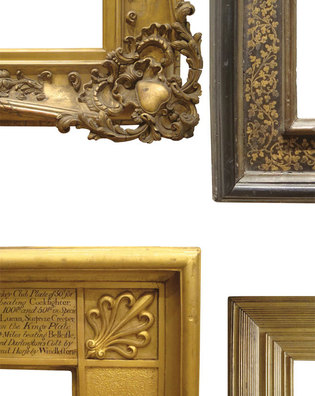 loading
loading
Last LookFrame of referenceFrames have artistic merit, too.  View full imagePicture frames can be significant art objects in their own right. A frame marks the boundary between a physical object and the wider world, notes Matthew Hargraves, associate curator at the Center for British Art; in doing so, it shapes our understanding of the art. The center has a collection of more than 2,000 historical frames, dating from the early seventeenth century to the present. (Photos and details are beginning to go up online at A few of the frames are highly unusual, including a naval-themed specimen from the mid-1700s that features sculptures of Neptune, anchors, flags, and a cannon. But most are in classic decorative styles. Those shown here, all slightly larger than actual size, represent nineteenth-century rococo revival (upper left), seventeenth-century northern renaissance (upper right), late-ninteenth-century Whistler style (lower right), and nineteenth-century neoclassical (lower left).
The comment period has expired.
|
|